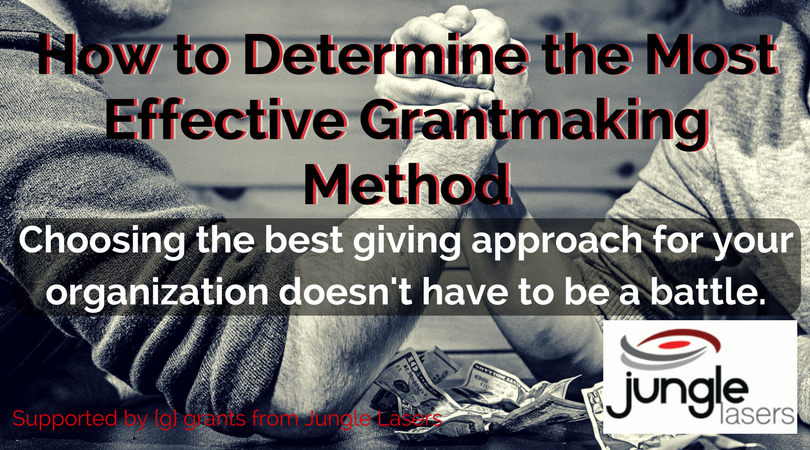Choosing the best giving approach doesn’t have to be a battle
There are a plethora of articles and blog posts available on the many differences between ‘responsive’ and ‘strategic’ grantmaking. Many of these philanthropic experts will argue that one approach is more effective than the other, but effectiveness is often difficult to prove.
Before choosing a grantmaking strategy, it is important to consider the many factors that determine what giving approach is best for your organization.
Approaches: Defined
Responsive grantmaking allows funders to support the community while they adjust their missions or determine their specific cause areas.. It is critical that organizations that fit into these categories familiarize themselves with multiple nonprofits through responsive giving. This type of giving will allow organizations to understand their impact in the community.
For example, if your mission is to help the environment, offering support to multiple nonprofits that fund animal welfare, clean water, and recycling initiatives will give you time to determine which grantee makes the most impact with their grant dollars over time. This method will also leave room for your organization to support other causes in the environmental field if a natural disaster or another type of issue were to occur with immediate local need.
Among the many articles written about this topic, it is the popular notion that strategic grantmaking, often referred to as ‘proactive grantmaking’, is the only way to make real waves in philanthropy. Giving strategically allows an organization to focus their efforts on driving change in a highly specified area of giving. Strategic grantmaking is a great approach when time and funds can be distributed accordingly in order to establish deep connections with grantees.
The strategic approach does seem to make a more significant impact from an outside perspective, but conducting research, working intensely on projects, and producing necessary funds for greater impact are not always the best ways to allocate resources for every organization.
Factors to consider:
- Once an organization has made a strategic grantmaking commitment to a specific group, it can be difficult to change direction in the future. Starting with a responsive grantmaking approach can provide some wiggle room when defining an organization’s focus and learning more about a project’s impact.
- Your organization may be devoted to a specific cause, but conducting research to develop effective project strategies can take a lot of time that your organization may not have. Do you need to create new positions within your organization to commit to your grantees? Are you willing to commit to this project for three to five giving cycles? What will your budget allow?
- Community needs can change and new, better ideas can arise. If a natural disaster were to strike in your community and you wanted to help, have you left yourself enough wiggle room to adjust your organization’s funding plans to support immediate needs?
- Responsive grantmaking can make it difficult to measure the effectiveness of grants as it is challenging to gauge the success of widely dispersed funds.
Final thoughts
Though it may not be easy, keep in mind that you can adjust the grantmaking strategy you choose to employ in future grant cycles. It may be difficult, but shifting focus can be done. Responsive grantmaking strategies can evolve into strategic methods over time, but it’s important to be patient. Start by outlining the goals you wish to accomplish with charitable funding and determine your grantmaking method from there.
There are a lot of organizations that find it best to implement both giving approaches in their grantmaking strategy. A majority of their funds will support a certain cause, but a smaller portion is dispersed to multiple organizations or reserved for more immediate causes.
Some organizations have strong relationships with their grantees, some are just breaking the philanthropic ice. Some organizations are able to designate more time and resources to spend on projects with their nonprofit partners, and others may be interested in changing the direction of their philanthropic missions altogether. Who’s to say that an organization giving responsively isn’t also being strategic? Now that you have a better understanding of your options, take time to explore and employ what works best for you.
Additional Sources:
https://www.forbes.com/sites/krisputnamwalkerly/2018/01/31/responsive-vs-strategic-grantmaking-which-one-is-right-for-you/#1fa0f16979ac
https://www.ncrp.org/publication/responsive-philanthropy-winter-2018/amplifying-impact-outrage-giving
Subscribe to our blog by providing your information in the spaces below!


Leave A Comment